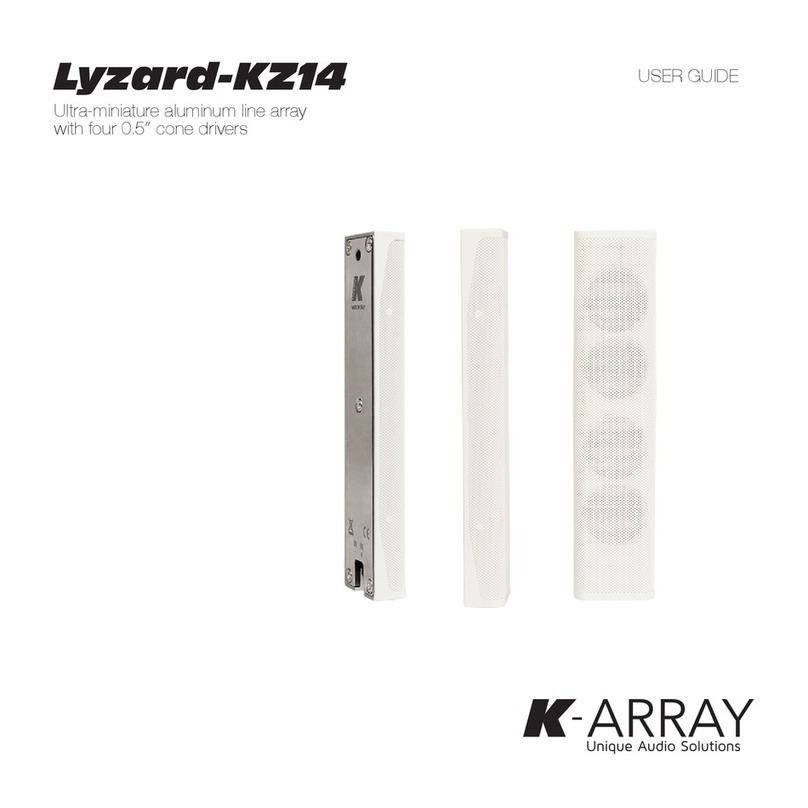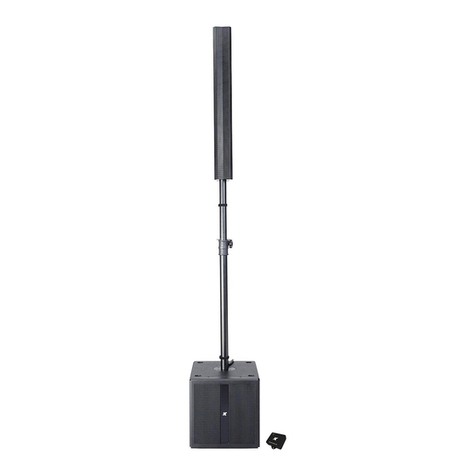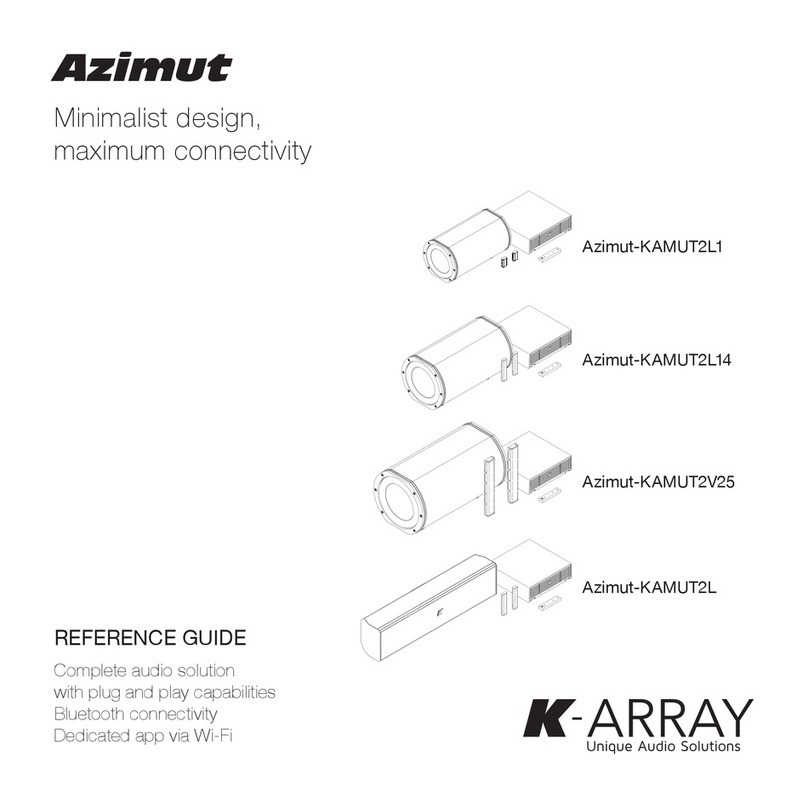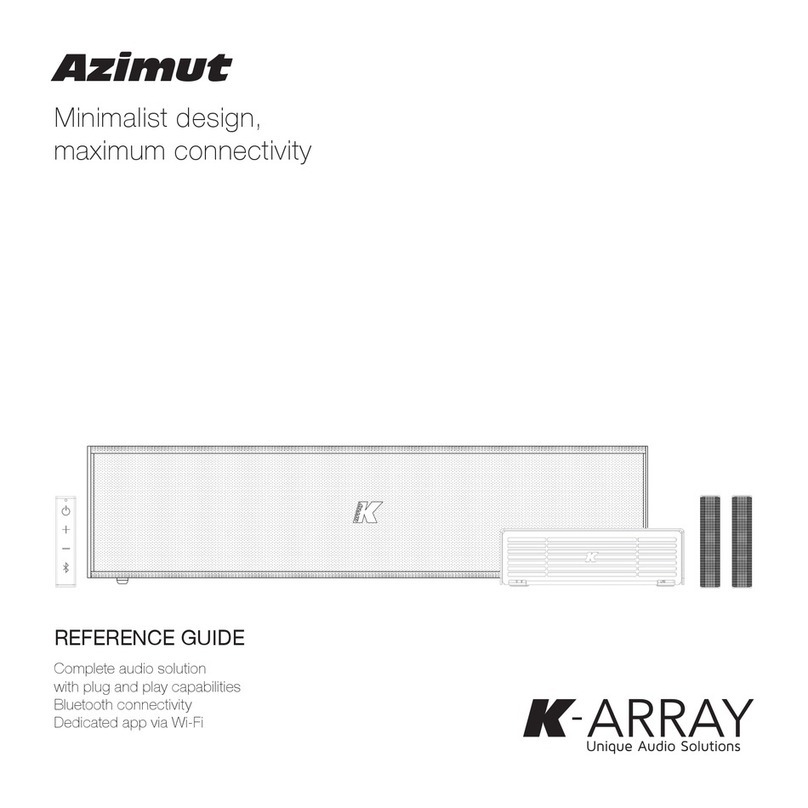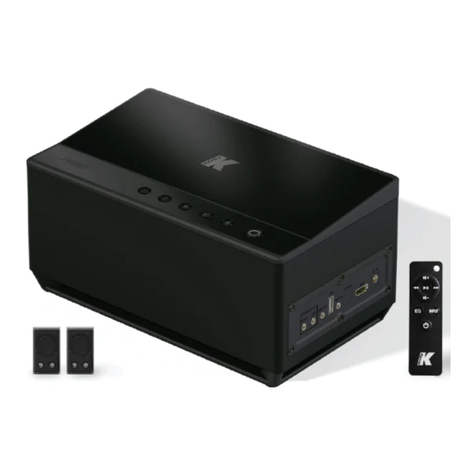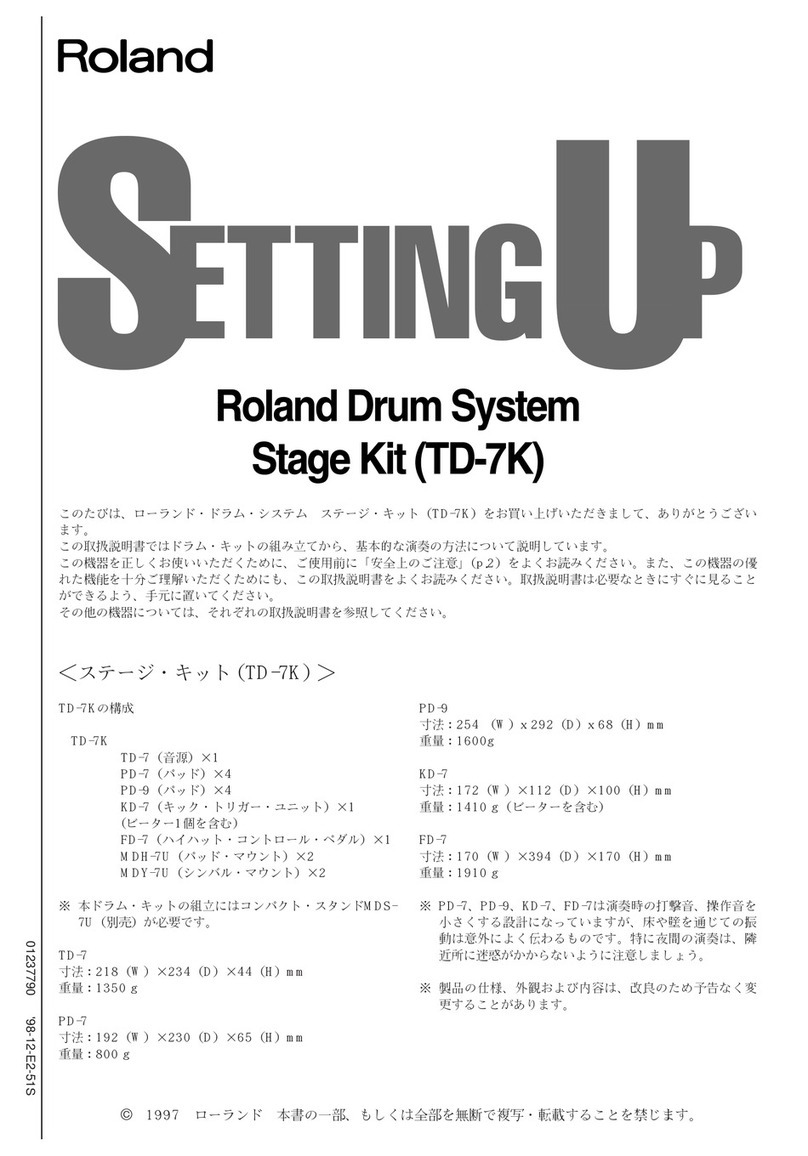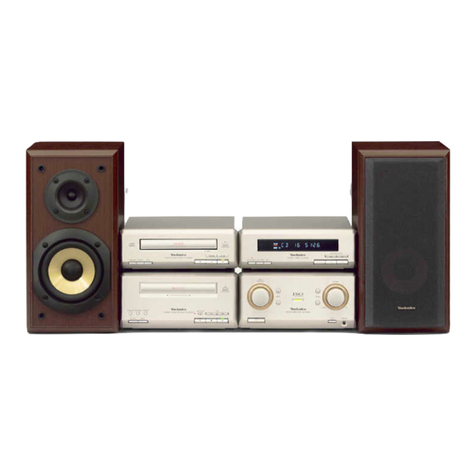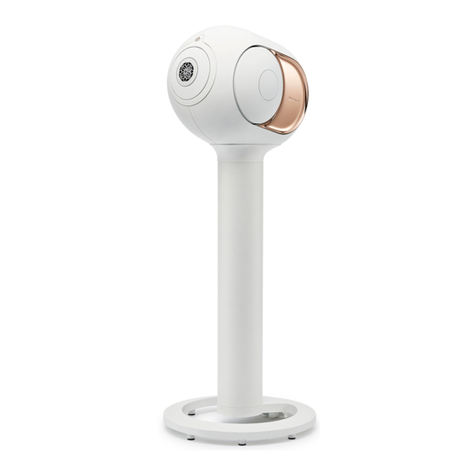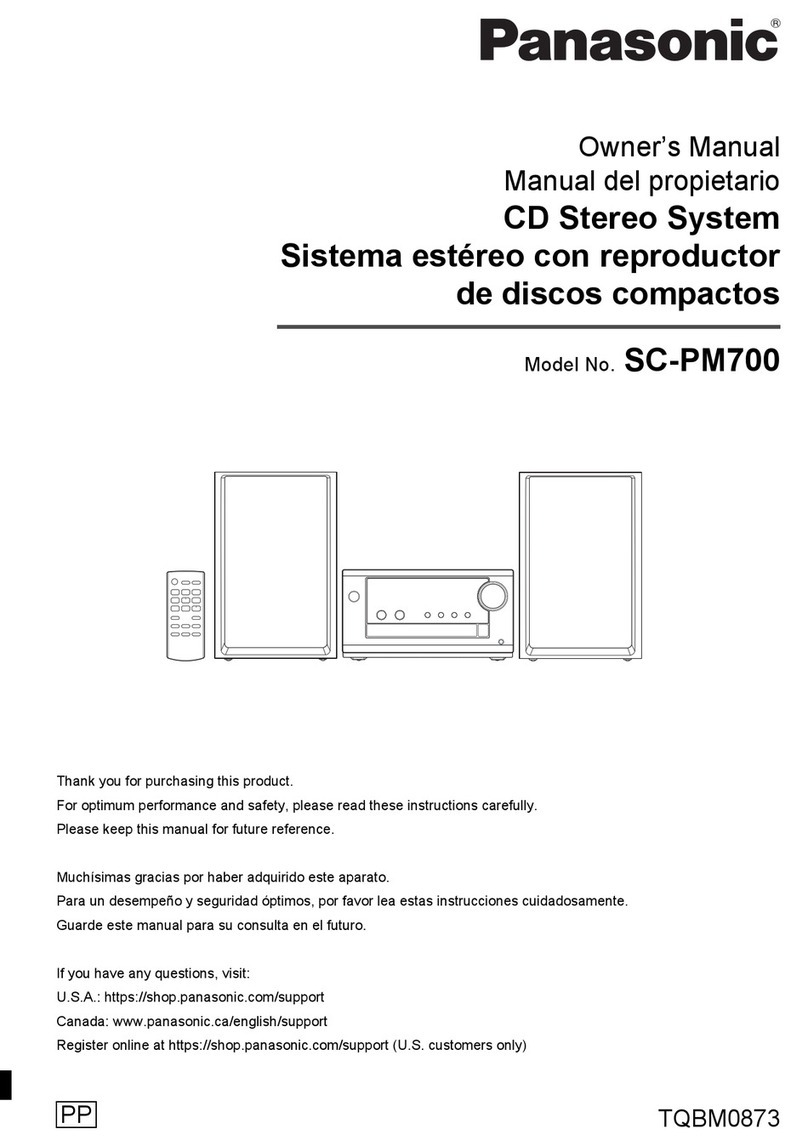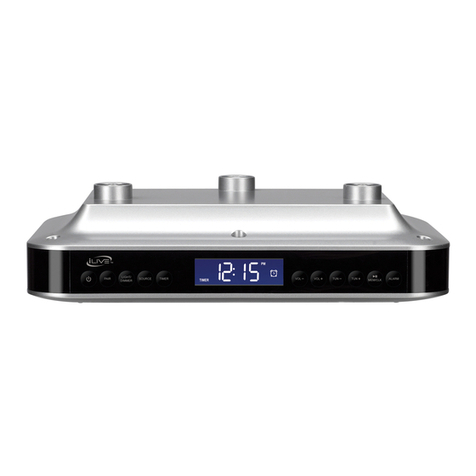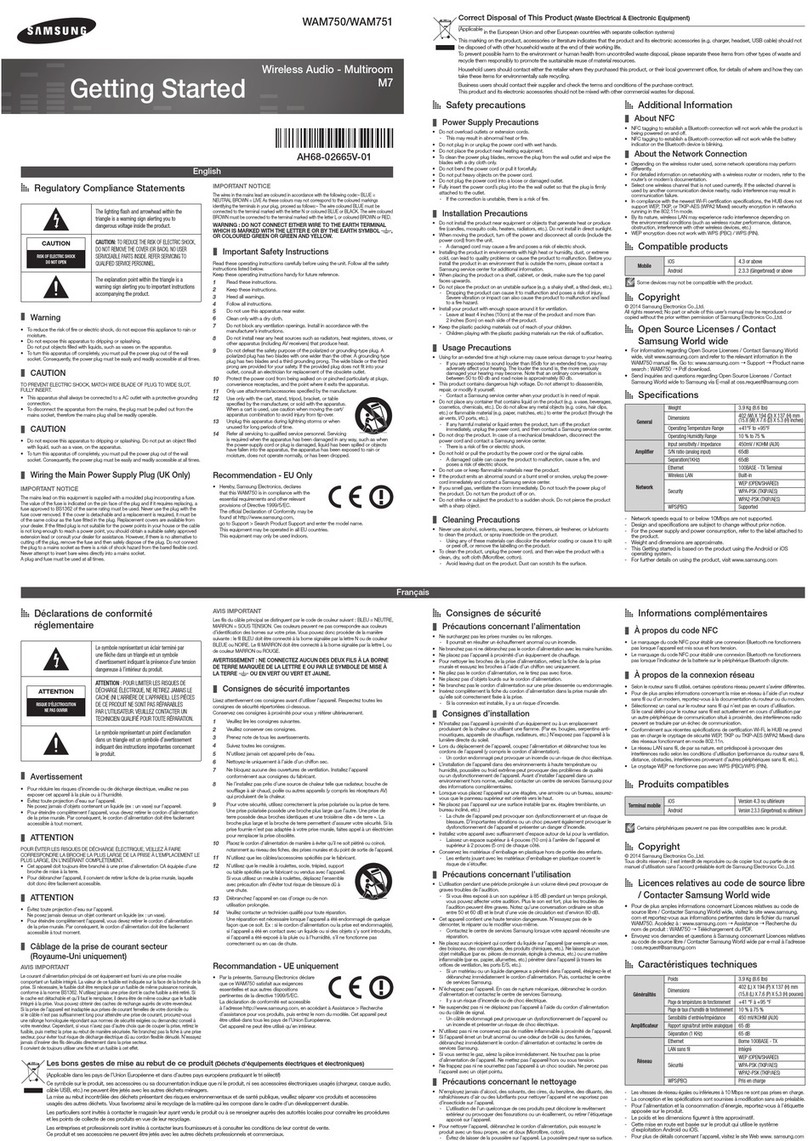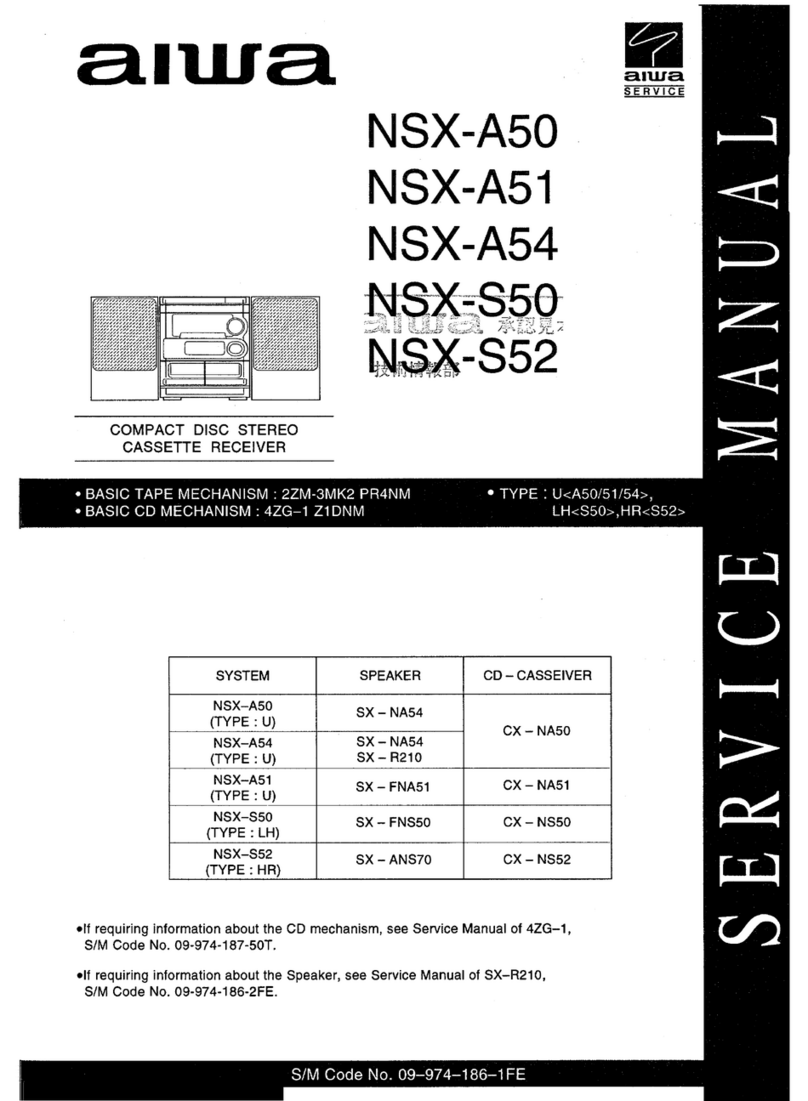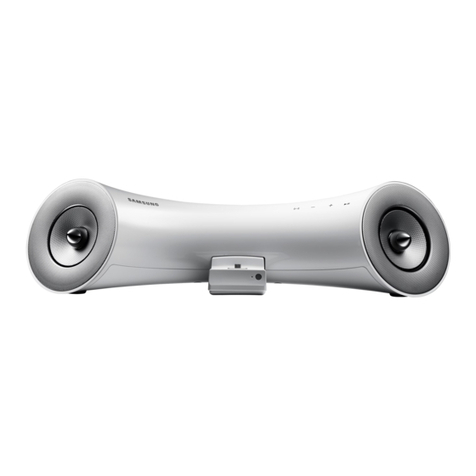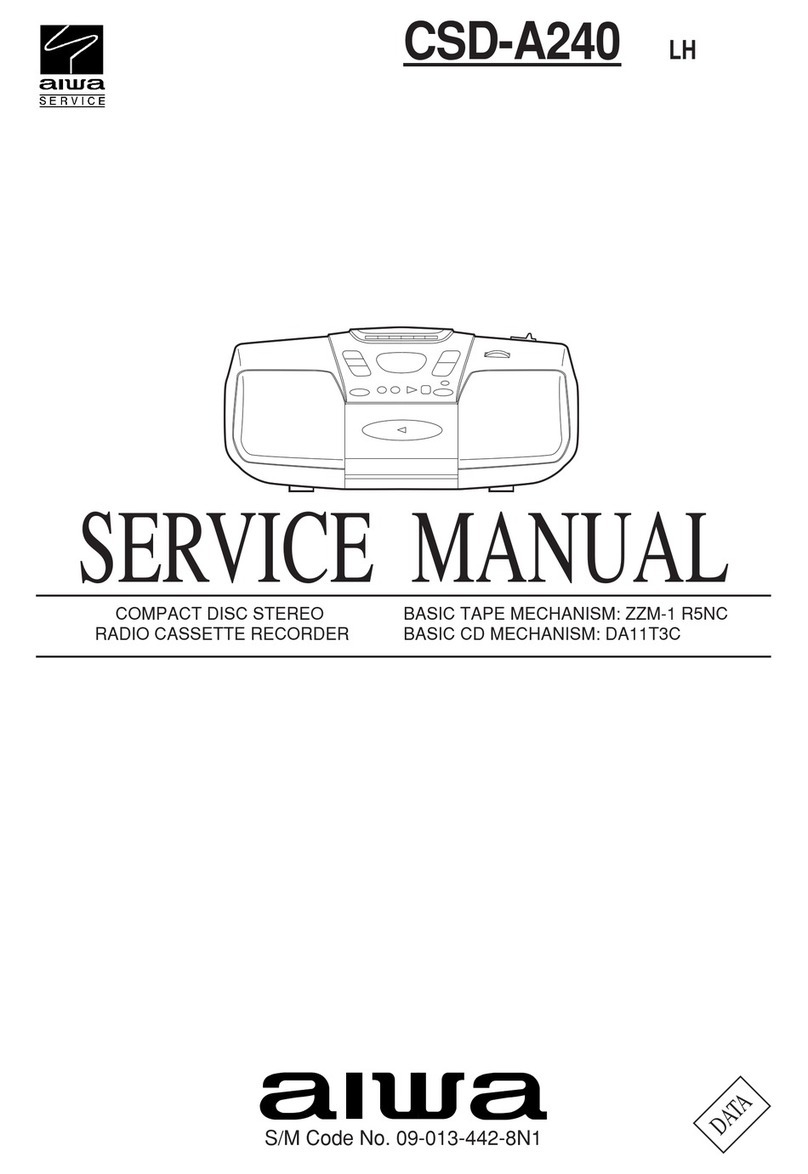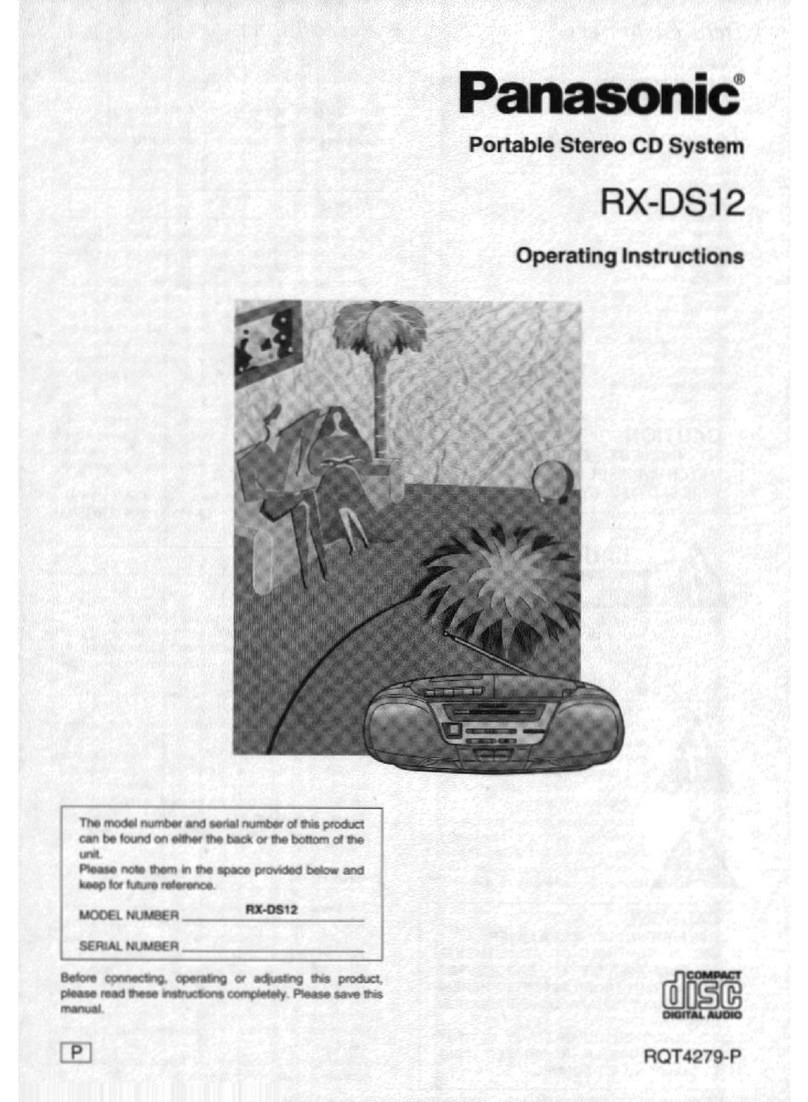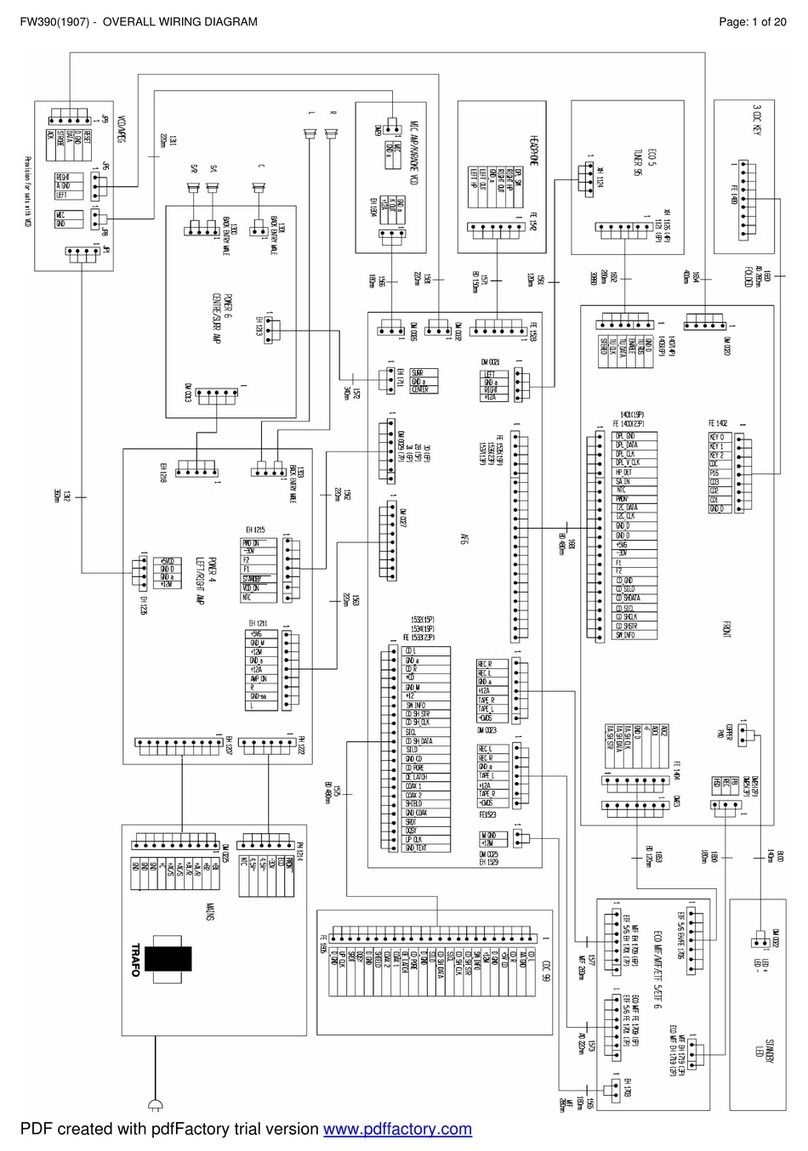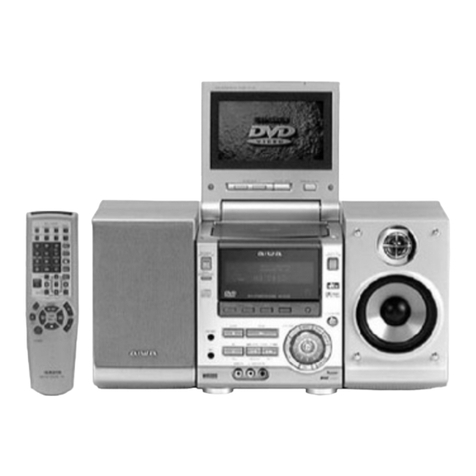K-array Piccolo User manual

Piccolo
USER’S MANUAL
English

Manual issued on 09-01-2012

Piccolo
3
rev.A
Contents
Symbols 5
1. Introduction 6
2. Unpacking 8
3. Package content 8
4. Safety and handling information 9
5. Physical 10
6. Power and voltage requirements 11
7. Amplifier overview 12
8. Setup and Operation 14
Wall mounting 14
Table or shelf mounting 14
9. K-Framework 16
9.1 System requirements 16
9.2 Installation and set up 16
9.3 Getting started 19
10. Service 24
11. Warranty 24
12. Declaration of conformity 25
13. Specifications 27

4
rev.A
Piccolo

Piccolo
5
rev.A
This symbol, wherever it appears, alerts you to important operating and
maintenance instructions in the accompanying literature. Read the manual!
K-array declares that this device is in compliance with the applicable CE
standards and regulations. Before putting the device into operation, please
observe the respective country-specific regulations!
WEEE
This device complies with the Restriction of Hazardous Substances Directive.
SYMBOLS
Please dispose of this product at the end of its operational lifetime by bringing it
to your local collection point or recycling centre for such equipment.

6
rev.A
Piccolo
1. Introduction
Philosophy
The Piccolo audio system from K-array has been designed to satisfy music lovers who are looking for
the highest quality sound from a virtually invisible speaker system.
K-array has over twenty years of research and development experience in acoustics and digital audio
signal processing design and production of professional sound systems for live theatre and concert
performances.
When we put our minds to our first “home system” we were intent on developing a product that would
have the power to fill your living room or study with concert hall sound and crystal clear definition in a
perfectly elegant and discreet format.

Piccolo
7
rev.A
Components
The Piccolo audio system is comprised of two mid-high speaker components, a sub woofer with a 6”
driver and a passive radiator, and the amplifier and control module.
There are no extraneous elements that are not essential to producing the highest level of fidelity and
to enhance the listening experience.
A basic kit for wiring, two brackets for wall installation and two stands for table or shelf mounting are
included in the packaging as well, to make the installation quick and easy for any use.
Use
The Piccolo audio system is a perfect example of K-Array’s design focus on user-friendly operation.
One control on the top of the amplifier turns the system on and off and sets the volume.
Signal inputs connect to balanced XLR and standard RCA connectors.
K-Framework PC software interfaces via USB, providing an intuitive 10-band equalizer which allows
the user to optimize the system frequency response to the specific environment and personal taste.
Installation is also made very easy. The two mid-high speakers can be mounted to a wall or to a shelf
using the mounting accessories and the wiring kit included in the package.

8
rev.A
Piccolo
2. Unpacking
3. Package content
Each Piccolo audio system is built to the highest standard and thoroughly inspected before leaving the
factory. Carefully inspect the shipping carton before opening it, and then examine and test your new
loudspeaker system. If you find any damage immediately notify the shipping company.
Only the consignee may institute a claim for damages incurred in shipping.
2 x
2 x 2 x 2 x
1 x
1 x1 x
1 x

Piccolo
9
rev.A
4. Safety and handling information
Read all safety information below and operating instructions before using Piccolo to avoid
injury. For a downloadable version of the Piccolo User Manual and the latest version of this
Important Product Information Guide, visit: www.k-array.com
Warning. Failure to follow these safety instructions could result in fire, shock or other injury
or damage to Piccolo or other property.
It is important that loudspeaker systems are
used in a safe manner.
Avoiding Hearing Damage.
Never stand close to loudspeakers driven at high
volume. Set the volume to a safe level. You can
adapt over time to a higher volume of sound that
may sound normal but can be damaging to your
hearing. If you experience ringing in your ears
or muffled speech, stop listening and have your
hearing checked. The louder the volume, the less
time is required before your hearing could be
affected.
Choking Hazards.
Piccolo contains small parts, which may present a
choking hazard to small children. Keep Piccolo and
its accessories away from small children.
Avoiding Water and Wet Locations.
Do not install the speaker in wet or humid locations
without using weather protection. Take care not to
spill any food or liquid on Piccolo. To clean Piccolo,
switch the system off, and unplug all cables and
allow it to dry thoroughly before turning it on again.
Do not attempt to dry Piccolo with an external heat
source, such as a microwave oven or hair dryer.
A Piccolo that has been damaged as a result of
exposure to liquids could be not serviceable.
Keeping the Outside of Piccolo Clean.
Handle your Piccolo with care to maintain its
appearance. To clean Piccolo, unplug all cables
and turn off it. Then use a soft, dry or slighty
damp cloth. Avoid getting moisture in openings.
Don’t use window cleaners, household cleaners,
aerosol sprays, solvents, alcohol, ammonia, or
abrasives to clean Piccolo.
Carrying, Handling and Installing Piccolo.
Piccolo contains sensitive components. Do not
drop, disassemble, open, crush, bend, deform,
puncture, shred, microwave, incinerate, paint, or
insert foreign objects into Piccolo.
Do not operate the speaker for an extended
period of time with sound distortion. This is
an indication of malfunction, which in turn can
generate heat and result in a fire.
To reduce the risk of overheating the amplifier,
avoid exposing it to direct sunlight.
Do not install the unit near heat emitting
appliances, such as a room heater or stove.
No naked flame sources such as lighted candles
should be placed near the device.
Operate Piccolo in a place where the
temperature is between -20°C and 50°C (-4°F to
122° F). Avoid dramatic changes in temperature
or humidity when using Piccolo, as condensation
may form on or within Piccolo.
During the use, it is normal for Piccolo to get
warm. The exterior of Piccolo functions as a
cooling surface that transfers heat from inside
the unit to the cooler air outside.

10
rev.A
Piccolo
Piccolo should be placed so that its location does
not interfere with its proper cooling.
Repairing or Modifying Piccolo. Never attempt to
disassemble, repair or modify the system yourself.
Disassembling Piccolo may cause damage that is
not covered under the warranty. The unit contains
no user-serviceable parts. Repairs should only be
performed by factory trained service personnel.
Voltage requirement. Be sure that the supplied
voltage stays between the specified range.
Piccolo operates safely and without audio
discontinuity if the AC voltage stays within both
85-132 V and 170-264 V , at 50 or 60 Hz. Verify
that your mains connection satisfies the power
ratings of the device. Only connect the power
supply to an appropriate power adapter.
Warning: connecting the system to an AC
power mains with a voltage exceeding 270V
will cause significant damage to the device
and create a serious risk for users!
2.1 cm
0.83”
9.2 cm
3.62”
1.6 cm
0.63”
22.5 cm
8.86”
22.5 cm
8.86”
13 cm
5.12 ”
22.5 cm
8.86”
20.5 cm
8.07”
22.5 cm
8.86”
5. Physical

Piccolo
11
rev.A
6. Power and voltage requirements
VDE power cable
Piccolo operates safely and without audio discontinuity if the AC voltage stays within both 85-
132 V and 170-264 V , at 50 or 60 Hz.
Verify that your mains connection satisfies the power ratings of the device.
CAUTION
Connecting the system to an AC power mains with a voltage
exceeding 270V will cause significant damage to the device and
create a serious risk for users!

12
rev.A
Piccolo
A B
C
E F G H
I
D
7. Amplier overview
on / off
vol.
+ / -

Piccolo
13
rev.A
A) XLR balanced inputs. These two inputs accept balanced, low impedance audio signals
which allow the use of long cable runs (>10mt), without losing the quality of the signal.
B) RCA unbalanced inputs. These connections are the standard for home devices
such as CD/DVD readers, portable devices, personal computers, etc.
C) RCA unbalanced outputs.
D) USB Remote Control plug for Remote Management via K-Framework software.
E) Power plug.
F) Left channel audio power output. Connect to the Left mid-high range speaker.
G) Subwoofer audio power output. Connect to the subwoofer.
H) Right channel audio power output. Connect to the Right mid-high range speaker.
I) Main Volume Knob. To turn the system on and off, push the knob down until
it clicks. When Piccolo is on, a soft white light will lter out from under the knob,
highlighting its frame, the position pointer, and three equally spaced reference points.
Turn the knob clockwise to increase the volume and counterclockwise to decrease the
volume. N.B. The last part of the volume knob’s range provides an extra gain of
10dB, useful for low volume sources.

Amp.
Spk L Spk R
Sub
14
rev.A
Piccolo
1) Fix the wall brackets to the mounting
surface with appropriate anchors or
screws.
2) Connect the cables to the speakers.
3) Clip the speakers to the bracket using
the magnets on the back of the speaker.
1) Place the stands on a plain surface.
2) Connect the cables to the speakers.
3) Clip the the speakers to the stands
using their magnet, placed on the back.
4) Place each component of the system
in the desired location
WALL MOUNTING
TABLE OR SHELF MOUNTING
8. Setup and Operation

Piccolo
15
rev.A
5) Plug the cable from your CD/DVD
player, mp3 reader, or any other compatible
audio device into one input.
6) Plug the power cable and the speakers
into their dedicated sockets.
on
off
vol.
-
vol.
+
7) Make sure the volume knob is in “0”
position by turning it anti-clockwise until it
stops.
8) Turn it on by pushing the volume knob
and press start on your audio source.
9) Gradually turn the volume knob
clockwise until it reaches the desired
volume.
10) To turn Piccolo off push the volume
knob again.
Piccolo has its own dedicated management
software to be loaded inside the K-Framework.
With this software users can edit the signal
processing both through equalization and
ambient design. All of these user settings can
be stored into preset files not only on the Piccolo
internal memory but also on the computer hard
drive or on any data support.
Presets can be shared on line with the
community of users through the k-array web
site, and specific presets will also be uploaded
by K-array itself.

16
rev.A
Piccolo
9. K-Framework
9.1 System requirements
9.2 Installation and set up
SYSTEM REQUIREMENTS:
Operating System: Windows Xp / Vista / 7
CPU: Intel Pentium 2 GHz
Memory: 1 Gb
REQUIRED COMPONENTS:
.NET Framework 4
http://www.microsoft.com/downloads/en/details.aspx?FamilyID=0a391abd-25c1-4fc0-
919f-b21f31ab88b7
Microsoft Visual C++ 2010 Redistributable Package (x86)
http://www.microsoft.com/download/en/details.aspx?id=5555
Microsoft Visual C++ 2010 Redistributable Package (x64)
http://www.microsoft.com/download/en/details.aspx?id=14632
To download your free K-Framework license, please go to the “Software Download” page of
the Blueline website (http://www.kblueline.com).
Once the .zip file is decompressed, it will show a folder containing the file “K-Framework.
setup”.
-Users of Windows Vista and 7 can install the software by simply opening the K-Framework.
setup file.
-Users of Windows XP are required to follow the following simple procedure to install the
necessary drivers, once the K-Framework software has been installed:

Piccolo
17
rev.A
1) Recall the “Manage” window from “Start Menu/My Computer”.
2) Select “Device Manager” from the menu on the left and expand the “USB controllers” sub-
menu.
3) Right click on the upper “K-Array_Dsp01” object and select “Driver Update” to launch the
“Hardware Update Wizard”
4) When asked to allow the online search select the “Not now” option and click on “Next”.
5) When asked for the drivers’ location, select the “Install from a list or specific location” option.
6) In the search and installation options window, select the “Search for the best driver in this
location” option and check the “Include this location in the search” checkbox, then browse for the
drivers’ containing folder. The path should read:
C:\ProgramFiles\K-array\K-framework\drivers_rev02
Once you have inserted the right search path, click “Next”.

18
rev.A
Piccolo
5
6
7) When warned about a failed “Windows Logo” test, please ignore the content of the warning
and click “Next”.
8) The first part of driver installation is now complete, and the “unknown” K-Array_Dsp01 port
has changed its name to a univocal “K-Array_Dsp01 A”. Click on “Finish” and repeat exactly the
same procedure for the still unknown port.
9) Now you can see that inside the Device Manager Window both devices now have a univocal
name and the alert symbol is no longer associated with them. Now you are 100% ready to get
started!

Piccolo
19
rev.A
A1) Connected Devices Indicator shows the quantity of detected connected devices.
N.B.: at startup, the indicator will show 0 devices even if one or more units are connected.
To detect all connected devices, just click the “Connect” button.
A2) Connect Button detects connected devices.
A3) Demo Mode Button activates the demo mode of K-Framework. In this mode, all
devices that can be mangaed with the K-Framework software appear in the Connected
Devices Menu on the left, so that the user can navigate through all the dedicated tabs
and have a glimpse of the different functions available for each of them.
A4) Device List displays all devices presently connected to the network.
N.B.: at startup the List will look empty even if one or more units are connected. To detect
all connected devices, just click the “Connect” button.
A5) Account Button opens the Account Settings Window where users can insert User
Name and Password to access the K-Array Community and the shared preset database.
A6) Zoom Buttons zoom in (+) and out (-) of the window view.
Click the Connect Button to detect all presently connected devices.
Once a connected device is detected by K-Framework it will appear in the K-Array Device List
as shown in the following picture:
At startup K-Framework will show the following window:
WARNING
Please verify that your Piccolo is connected to your PC via
USB before running K-Framework for the first time!
9.3 Getting started

20
rev.A
Piccolo
B1) Connected Device Name.
B2) Device Menu Button shows and hides the device menu.
B3) Device Menu displays the basic information about the device and the shortcuts to open
all available Editing Tabs.
Other manuals for Piccolo
1
Table of contents
Other K-array Stereo System manuals
